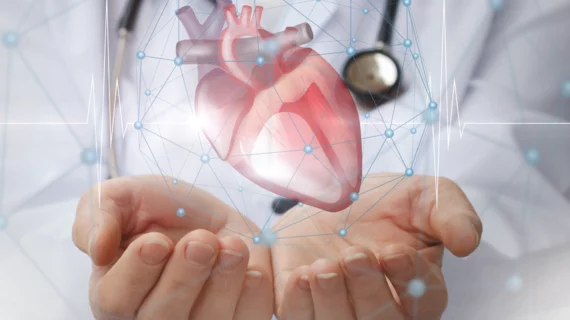MicroRNAs could protect the heart after MI
MicroRNAs could be key to treating heart failure, according to a study out of Boston Children’s Hospital and Zhejiang University School of Medicine in China.
The study, published in the April edition of Nature Communications, isn’t senior author Da-Zhi Wang’s first foray into the interplay between genetics and CV disease. In 2013, Wang, PhD, a cardiology researcher at Boston Children’s and a pediatrics professor at Harvard Medical School, identified a family of microRNAs called miR-17-92 that regulated the proliferation of cardiomyocytes.
The miR-17-92 cluster of miRNAs regulates animal development and cell proliferation—something that could be key to rebuilding a heart’s structure after an event like an MI. Since cardiomyocytes have a limited ability to reproduce once a person’s heart structure is fully formed, patients who suffer heart attacks are left with scar tissue instead of new CV cells, making them vulnerable to future heart failure.
“Using mouse models of genetic mutation and overexpression, we have previously reported that the miR-17-92 cluster plays a critical role in cardiomyocyte proliferation in embryonic, postnatal and adult hearts,” Wang and co-authors wrote in their latest work. “Cardiomyocyte-specific overexpression of miR-17-92 enhanced cardiomyocyte proliferation in transgenic mice and protected the heart from MI.”
The team once again employed mouse models to test the efficacy of two members of the miR-17-92 family—miR-19a and miR-19b—in doing the same. They injected the microRNAS into their subjects two ways, delivering some directly to the mice’s hearts and coating other doses with lipids to help with their uptake into other cells.
Wang et al. said that following a heart attack, injecting miR-19a/19b into the mice using either method provided both immediate and long-term protection to the mice’s hearts. In the study’s early phase, the first 10 days after a heart attack, miR-19a/19b reduced rates of acute cell death and suppressed the inflammatory immune response that often triggers cardiac damage.
The authors reported the microRNAs inhibited a host of genes involved in the process of exacerbating heart damage after an MI. Long-term, treated hearts exhibited more healthy tissue, better contractility and less dead or scarred tissue. The treatment also reduced rates of dilated cardiomyopathy.
Wang and colleagues said one of the greatest advantages of the treatment is that unlike gene therapy, microRNAs don’t linger in the heart. Mice were given a shot only when their hearts needed the most help—during a heart attack—but while expression of miRNA-19a/19b decreased to a normal level within a week of the rodents’ events, the cardioprotective effects lasted more than a year.
“Whereas our study provides convincing evidence to support the positive roles of miRNAs in cardiac function, it should be recognized that certain limitations and barriers must be overcome before miRNAs can become effective therapeutic tools to treat heart disease,” the authors wrote, noting that moving forward they’d have to look at solutions for more effectively delivering microRNAs to treatment sites. “Nevertheless, microRNAs hold tremendous promise to become powerful tools to battle cardiovascular disease.”

